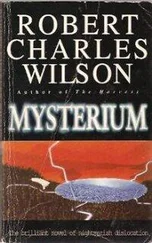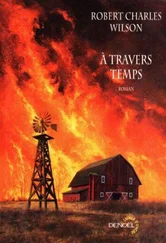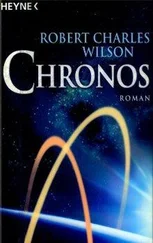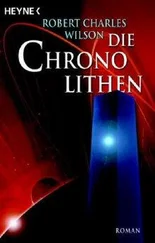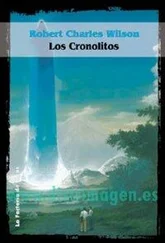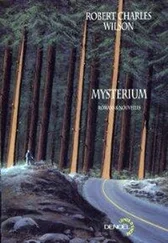Robert Wilson - SCHRODINGER'S CAT TRILOGY
Здесь есть возможность читать онлайн «Robert Wilson - SCHRODINGER'S CAT TRILOGY» весь текст электронной книги совершенно бесплатно (целиком полную версию без сокращений). В некоторых случаях можно слушать аудио, скачать через торрент в формате fb2 и присутствует краткое содержание. Жанр: Триллер, на английском языке. Описание произведения, (предисловие) а так же отзывы посетителей доступны на портале библиотеки ЛибКат.
- Название:SCHRODINGER'S CAT TRILOGY
- Автор:
- Жанр:
- Год:неизвестен
- ISBN:нет данных
- Рейтинг книги:5 / 5. Голосов: 1
-
Избранное:Добавить в избранное
- Отзывы:
-
Ваша оценка:
- 100
- 1
- 2
- 3
- 4
- 5
SCHRODINGER'S CAT TRILOGY: краткое содержание, описание и аннотация
Предлагаем к чтению аннотацию, описание, краткое содержание или предисловие (зависит от того, что написал сам автор книги «SCHRODINGER'S CAT TRILOGY»). Если вы не нашли необходимую информацию о книге — напишите в комментариях, мы постараемся отыскать её.
SCHRODINGER'S CAT TRILOGY — читать онлайн бесплатно полную книгу (весь текст) целиком
Ниже представлен текст книги, разбитый по страницам. Система сохранения места последней прочитанной страницы, позволяет с удобством читать онлайн бесплатно книгу «SCHRODINGER'S CAT TRILOGY», без необходимости каждый раз заново искать на чём Вы остановились. Поставьте закладку, и сможете в любой момент перейти на страницу, на которой закончили чтение.
Интервал:
Закладка:
Joseph K. suddenly looked sly. "Oh," he said slowly, "you claim that you are not George Dorn? How clever of them, although I can't imagine how they persuaded you, but of course a man of your moral principles would not be bribed, certainly. They must have convinced you it was for my own good in some absolute metaphysical sense, right?
Certainly. You would not work for them out of malice, would you?' He released Dashwood with a poignant, despairing gesture. "You mean well, he said. "They all mean well, I know. But I am innocent, I tell you!"
He backed away. "And you are George Dorn, and I am not deceived," he added bitterly.
Then he turned and ran.
PARAREALISME
The big news of the 1985 season in the art world was that Francois Loup-Garou had abandoned Neo-Surrealism and founded a new school of art called Pararealisme.
This was only partly the result of the Rehnquist in the Lobster Newburg; it was also a matter of economics.
For nearly a century, it had been very important for an artist to belong to a "school," and it was even better to be the founder of a "school." This was not just a case of "In Union There Is Strength"; it was also a shrewd marketing strategy. It might take an individual painter ten or twenty years to be "discovered"-if he were original, it might take much longer, and he might not be alive to enjoy it-but when a School of Art was formed, that was News, and all members of the school were discovered simultaneously.
There had been an Impressionist school, a Post-Impressionist school, an Expressionist school, an Abstract Expressionist school, a Cubist school, a Futurist school, a Pop school and an Op school, and so on. Francois Loup-Garou had noticed that the commercial life of each school was getting shorter all the time, due to the accelerated intensity of competition: Neo-Surrealism was already being eclipsed, as an object of news and debate, by the Neo-Cubism of the American, Burroughs.
He decided it was time to launch a new school.
After the experience of the Rehnquist in the Lobster Newburg, Pararealisme seemed appropriate to him.
According to Standard Operating Procedure, he got a few friends together and they began issuing Proclamations denouncing all other schools (especially Neo-Cubism) as obsolete and reactionary. This got them into the Art Journals and into some newspapers.
Then they held their own first show, and that got them into the international news magazines.
They were news; it didn't really matter if their paintings were any good at all.
In fact, their paintings were rather good, in a fey sort of way.
They had revived traditional "representational" art (everything they did was as naturalistic as a news photograph), but with a difference that made a difference.
The largest canvas at the first Pararealiste show was Loup-Garou's own What Do You Make of This, Professor? An enormous work it was, covering two walls, bent in the middle on a special hinged frame. It showed a cerulean-blue sky, with hailstones: thousands and thousands of hailstones, six months' painstaking labor, and each hailstone had a tiny image of the Virgin Mary on it.
Puzzled viewers might have found some enlightenment in the First Pararealiste Manifesto:
We of the Pararealiste movement, recognizing the meaninglessness of this chaos that fools call life, find the relevance of existence only in its monstrosities.
But we are not Existentialists or anything of that sort, thank God; and besides, the perversities of humanity have grown boring. After the Fernando Poo Incident, what can a mere man do that will shock us? It is the abnormalities of nature that we find illuminating; that is what distinguishes us from sadists, New Leftists, and other intellectual hoodlums.
We are delighted that Pluto, Mickey, and Goofy are all at odd angles from the plane of the eight inner planets. We are thrilled with Bohr's great principle of Relativity, which shows that to look out into space is also to look backward in time. WE ARE THE DAY AFTER YESTERDAY!!!
Some said that the Pararealistes were even better at writing manifestos than at painting pictures; but they meant what they said. The hailstones in What Do You Make of This, Professor? were no image of dream or delirium-"We spit on surrealism! Fantasy is every bit as dreary as Logic! It is the REAL that we seek!" the First Manifesto had also declared. What Loup-Garou had so painstakingly depicted was an occurrence that actually happened at Lyons in 1920. Xeroxes of the old newspaper stories about the event ("PEASANTS SEE VIRGIN ON HAILSTONES") were distributed to the press, emphasizing again that Pararealistes only painted the real, or as they always wrote, the REAL.
Little Pierre de la Nuit-Pierrot le Fou, he styled himself-was Loup-Garou's best friend and had contributed seventeen canvases to the first show. Magnificent, monstrous things they were, of course-flying saucers, all of them: blue and gold and silver and green and bright orange, shaped like doughnuts or boomerangs or ellipsoids or cones. Every one of them had been reported in the sky by somebody or other in the past forty years.
Loup-Garou circulated news stories about each sighting, you can be sure, to demonstrate again pararealisme's devotion to the REAL.
Then there was Jean Cul's The Sheep-Cow; some claimed it was the greatest of all Pararealiste paintings. It portrayed an animal half-sheep and half-cow, a veritable insult to the laws of genetics. Such an animal had been born in Simcoe, Ontario, in 1888. They circulated news stories about it.
All of this created so much international discussion that the Pararealistes immediately released the second Manifesto. (They had learned something about P.R. from the early surrealists.)
They denounced those who did not like their paintings as fools. They then denounced those who did like their paintings as damned fools, for liking them for the wrong reasons. They went on to fulminate against everybody in general:
We renounce and hurl invective upon the rationalist conducting experiments in his laboratory. Every instrument he uses is a creation of human narcissism; it emerges from the human ego as Athene from the head of Zeus. The rationalist imposes his own order on these instruments; they impose order on the data; and he then proclaims that the universe is as constipated and mechanistic as his own mind! What has this epistemo-logical masturbation to do with the REAL?
And we abominate and cast fulminations upon the irrationalist, also. Behold him, in his drugged stupor, maddened by opium or hashish, gazing inward and depicting his childish dream and nightmares on canvas. He is as limited by the human unconscious as the rationalist is by the human conscious. Neither of them can see the REAL!!!
It reads better in the original French. But it would have been a top news story if it hadn't been eclipsed by the singularly obscene "miracle" at Canterbury Cathedral that week.
The details of the alleged "miracle" had been censored and covered up by high Church officials from the very beginning. Newspapers, at first, printed only short items saying that something strange caused the Archbishop of Canterbury to turn a ghastly white during Mass and stumble so badly that he fell off the altar.
Of course some cynics immediately assumed that His Eminence was as drunk as a skunk. There are always types like that, believing the worst of everybody.
Then the rumors started to circulate. Those who had been in the Cathedral said that the Most Reverend Archbishop had not so much stumbled as jumped, and that his expression was one of such fear and loathing that all present felt at once that something distinctly eldritch and unholy had invaded the church. Others, imaginative types and religious hysterics, claimed to have felt something cold and clammy moving in the air, or to have seen "auras."
Читать дальшеИнтервал:
Закладка:
Похожие книги на «SCHRODINGER'S CAT TRILOGY»
Представляем Вашему вниманию похожие книги на «SCHRODINGER'S CAT TRILOGY» списком для выбора. Мы отобрали схожую по названию и смыслу литературу в надежде предоставить читателям больше вариантов отыскать новые, интересные, ещё непрочитанные произведения.
Обсуждение, отзывы о книге «SCHRODINGER'S CAT TRILOGY» и просто собственные мнения читателей. Оставьте ваши комментарии, напишите, что Вы думаете о произведении, его смысле или главных героях. Укажите что конкретно понравилось, а что нет, и почему Вы так считаете.

